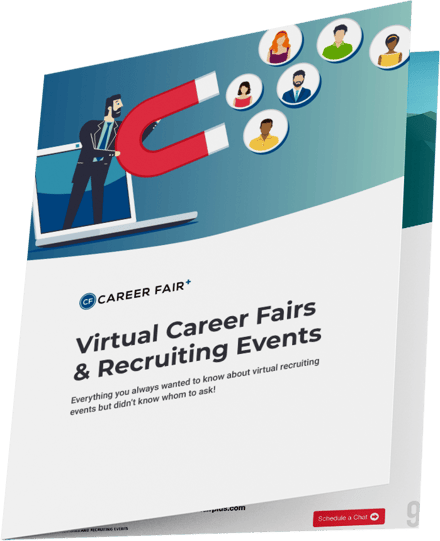
Experiential learning (EL) is everywhere in higher ed strategic plans.
It shows up in mission statements. It’s celebrated in fundraising campaigns. It’s the kind of high-impact practice that accreditors love to see.
And yet, most institutions are still stuck in the pilot phase.
They launch a new course, pilot a grant-funded program, or promise more hands-on opportunities in a student success plan. But that initial momentum rarely translates into a sustained, institution-wide effort.
Why? Because implementing experiential learning at scale isn’t about creating more programs. It’s about creating the systems to support them.
Too often, the platforms campuses use to activity track EL don’t fit their processes. They create more friction than flexibility. Instead of freeing up time to engage with students, staff are buried in email approvals and spreadsheet workarounds.
This article lays out what it really takes to implement experiential learning as a sustainable, scalable strategy.
The Illusion of Quick Wins
When institutions say they “do” experiential learning, they usually point to a few successful efforts:
- A co-op program that’s grown year over year
- A summer internship fund that helps a handful of students
- A capstone course with real-world projects
These are valuable—but they aren’t enough.
Without shared definitions, cross-campus alignment, and systems that support scale, even the best efforts run into limits. Faculty burnout. Staff leave. Partners get confused. And leadership wonders why more students aren’t participating.
To move beyond short-term wins, campuses need to shift from programs to systems.
Four Core Capabilities Every EL Initiative Needs
1. Shared definitions and purpose
Before you scale, you have to align.
What counts as experiential learning? What outcomes are you aiming for—career clarity, skill development, persistence?
Without shared language, departments create their own criteria. That leads to inconsistency, inequity, and a fractured student experience.
Successful institutions take the time to define EL collaboratively with many stakeholders, and then communicate those definitions clearly to students, faculty, and employers.

2. Campus-wide coordination
Experiential learning doesn’t live in one office. It lives in academic departments, the career center, student life, community engagement, study abroad, and alumni relations.
Without intentional coordination, campuses risk duplicating efforts or leaving students behind. Some units thrive while others never hear about available opportunities.
Shared ownership is key. When faculty, staff, and administrators work together, they can design a more integrated, student-centered approach—one that reaches every major, every population, and every type of learner.
Involving people early allows time for them to see you integrate their input, which leads to faster buy-in.
Consider ways to extend ownership beyond initial engagement. Create committees to support strategy development and implementation around employer, faculty, and student engagement and critical topics such as marketing and technology integration. Move the committees’ recommendations and observations up to an advisory group that sets the overall strategic direction for the initiative.
3. Data infrastructure
If you can’t see it, you can’t improve it.
Institutions need systems that track participation, quality, and outcomes by discipline, demographic, and experience type. Disaggregated data reveals who’s being left out and what to improve...
Career Forge was designed to meet this exact need. With flexible workflows and NACE-aligned reporting, it reduces administrative burden while increasing strategic visibility.

One Career Forge partner shared that before implementation, they were manually piecing together internship data from email and shared drives. After switching to Career Forge, they work almost entirely in the EL Module and have reduced errors while saving time.
You can stop chasing down approvals and start telling a clearer story of student success.
4. Scalable workflows
Manual processes don’t scale. Full stop.
The more experiential learning expands, the more approvals, evaluations, and communications are required. If your system depends on ad-hoc forms and endless email threads, your staff will burn out before your strategy takes hold.
Institutions need workflows that can flex to their structure—not the other way around. Career Forge automates key processes without losing nuance, giving faculty and staff the tools to work smarter—not just harder.
When multiple stakeholders are involved—from employers to instructors to registrars—communication is everything. Career Forge’s custom workflows move students through a seamless process, engage partners at the right moments, and give staff full visibility into what’s been completed (and what hasn’t).
Student internship information? Check.
Offer letter submitted? Check.
Student-employer contract? Check.
Course enrollment? Check.
Everything in one place—and everyone on the same page.
When processes like this are simplified and easy to take action on, you get more participation from your campus partners while also building trust.
The Real Mindset Shift: EL as a Student Success Strategy
Here’s the shift that makes it all work:
Experiential learning isn’t a “program.” It’s a principle—a way of helping students connect what they’re learning to who they’re becoming.
Institutions that do this well don’t just offer EL opportunities. They embed EL across the student journey. It’s in advising. It’s in the classroom. It’s in student employment and alumni engagement.
They stop treating EL as an add-on and start seeing it as essential to retention, belonging, and post-graduate success.
As Dave Nicol, Career Forge’s CEO, puts it:
“Experiential learning is no longer optional. It’s central to how students discover their purpose, prove their potential, and prepare for what’s next. The institutions that lead will be the ones that make EL part of their core design—not just an initiative on the side.”
This mindset shift isn’t just philosophical. It changes how institutions prioritize, resource, and measure success—and it demands platforms that can support the complexity of real student journeys.
From initiative to ecosystem
The goal isn’t starting more initiatives.
It’s building an ecosystem where experiential learning thrives. That requires clear definitions. Cross-campus alignment. Strong infrastructure. And yes—a platform that supports the work instead of slowing it down.
Career Forge is helping institutions make that leap.
Because real impact comes not just from what you offer—but from how you build it.
